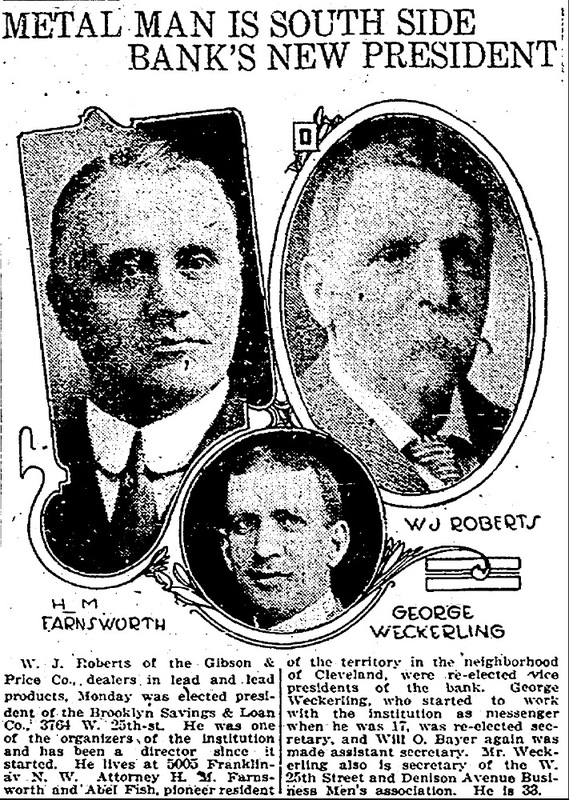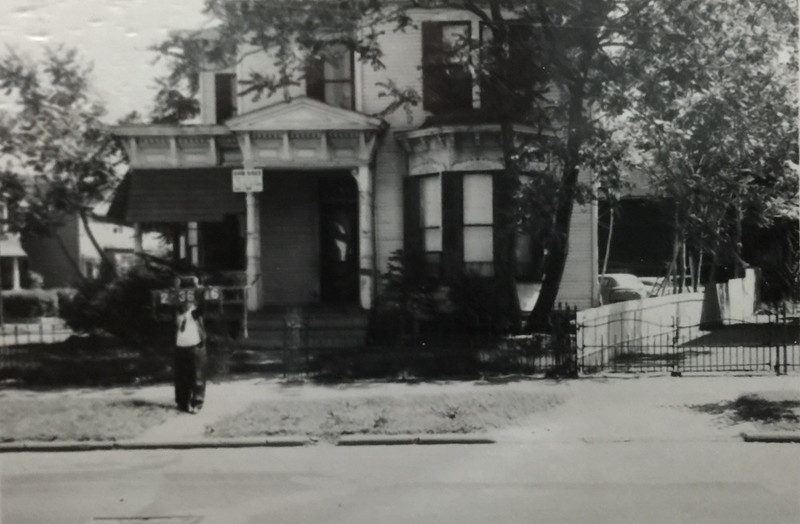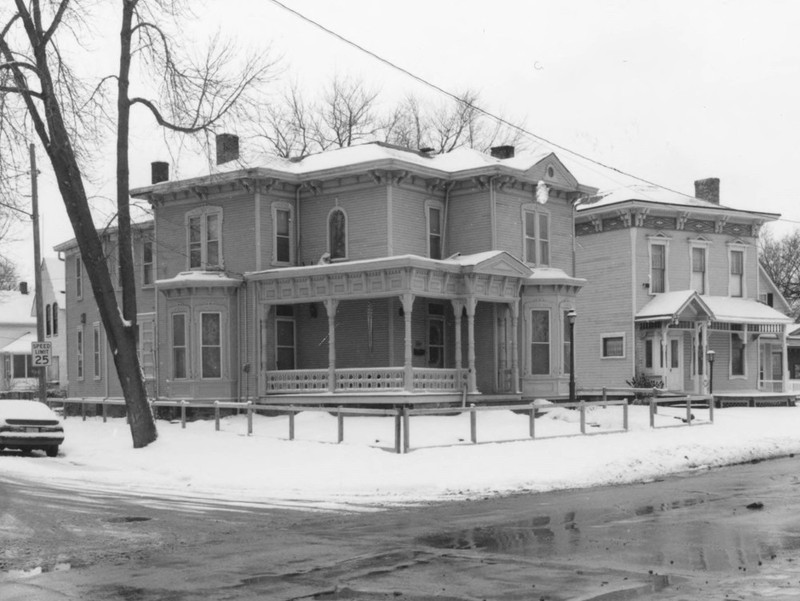
Many of the houses on Franklin Boulevard tell a story of the wealth that could be accumulated in Cleveland in the late nineteenth and early twentieth centuries as the City became an industrial powerhouse in the Midwest. The house at 5005 Franklin Boulevard is one such house. But this house--like others along the Boulevard, also tells a story of renewal and restoration.
Built in 1874 by Dudley Baldwin, a wealthy nineteenth century Cleveland railroad man, banker, and real estate developer, the house was first owned and occupied by Harvey and Alice Murray, before it was purchased in 1882 by Teresa Roberts, the wife of William J. Roberts, an up and coming industrialist in Cleveland's early industrial era. Born in 1844 in Cincinnati, "W. J.," as he was known, left the Queen City and came to Cleveland when he was about 30 years old to find his fortune. It was an era when Cleveland was beginning to catch (and would later surpass) Cincinnati in both population and industrial might.
Robertsin became associated with two Clevelanders, Samuel Gibson and Fred Beckwith. In 1874, the three started the Gibson, Roberts and Beckwith Lead Works on Champlain Street, where the Terminal Tower Complex sits today. Later, the company moved its manufacturing operations to the Flats on the east bank of the Cuyahoga River, in an area then known as Cleveland Centre. There, the company built a new factory for its lead piping and other lead products manufacturing. The business rapidly grew and continued to operate at this location well into the twentieth century when it merged with several other companies to form the United Lead Co. Roberts continued his involvement in the business, and later, once his reputation as a businessman was firmly established, also became involved in Cleveland's banking industry, becoming President of Brooklyn Savings & Loan Association.
By all accounts, the Roberts were very happy in their grand Italianate house at 5005 Franklin Boulevard. One story that has been passed down in the family is that, at one point, W. J. and Teresa Roberts decided to sell the house--possibly to move to an even grander address, but, after making the deal, were so unhappy at the prospect of leaving the house, that they bought it back--at a higher price than what they sold it for! The couple and their children lived in the house for nearly 40 years, until his death in 1919. The following year, Teresa sold the house and moved into an apartment.
After the Roberts family left, and as Franklin Boulevard became a less desirable location in the first half of the twentieth century for Cleveland's wealthy West Siders, the house, like many on Franklin Boulevard, searched for a new use and, like many others, became a boarding house. Elida Humphrey, a widow, operated the house as such from the late 1920s until her death in 1957. By this time, two new problems threatened neighborhood houses as deindustrialization and flight to the suburbs hit the City of Cleveland hard. Many of the grand old homes on Franklin Boulevard began to deteriorate from age, neglect and disrepair.
In the 1970s, as Ohio City began to experience re-gentrification and Detroit-Shoreway activists to the west began their efforts to revitalize historic Gordon Square, a number of the grand old homes on Franklin Boulevard experienced renewal and restoration. Henry Kinicki and Tillie Tybuszewski, who purchased the W. J. Roberts house in 1976, converted it back to a single-family dwelling and lived in it for nearly three decades. In 2005, they sold the house to Russell Cendrowski and Roger Scheve, who then painstakingly restored it remarkably to its original nineteenth century grandeur. Next trip down Franklin Boulevard, be sure to pay attention to the beautiful Italianate house on the southwest corner of the Boulevard and West 50th Street.
Images











